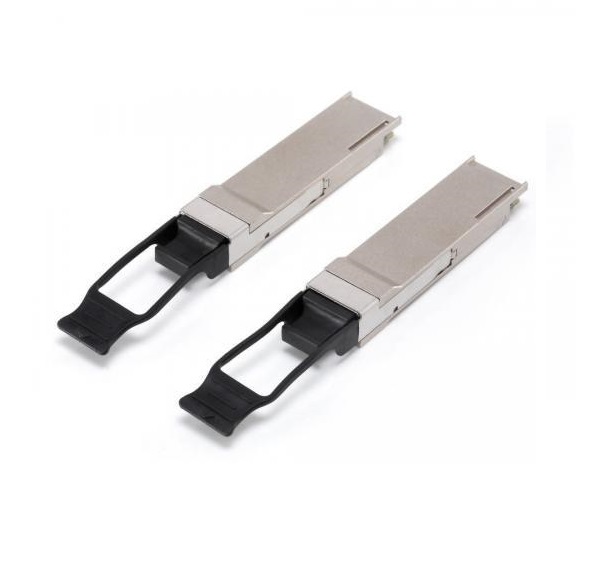- Sales SupportContact Sales
- Call us at: +(86) 15211074652
- Send us a email at: info@zr-fibercable.com
QSFP56: Unleashing the Potential of 800G Connectivity
As data centers and high-performance networks continue to evolve, the demand for faster and more efficient connectivity has led to the development of QSFP56 transceivers. QSFP56 (Quad Small Form Factor Pluggable 56) is the latest iteration in the QSFP family, offering blazing-fast data rates of 800 Gigabits per second (Gbps). In this article, we will explore the features, benefits, and applications of QSFP56, shedding light on its potential to revolutionize high-speed connectivity.
Overview of QSFP56:
1.1. Introduction:
QSFP56 is a compact, hot-pluggable transceiver form factor that supports high-speed networking applications. It builds upon the success of its predecessors, such as QSFP and QSFP28, to deliver even greater data rates and performance.
1.2. Key Features:
Higher Data Rate: QSFP56 provides a data rate of 800Gbps, twice that of QSFP28, enabling faster transmission of data and meeting the requirements of bandwidth-intensive applications.
High Port Density: QSFP56 maintains the same form factor as QSFP28, allowing for increased port density within existing network infrastructure.
Backward Compatibility: QSFP56 is backward compatible with QSFP and QSFP28 interfaces, facilitating seamless migration from lower speeds to 800G.
Benefits of QSFP56:
2.1. Enhanced Bandwidth:
The increased data rate of QSFP56 unlocks greater bandwidth capabilities, catering to the growing demand for higher-speed connectivity in data centers, cloud services, and emerging technologies like 5G.
2.2. Improved Efficiency:
By transmitting more data in a single link, QSFP56 helps optimize network efficiency, reducing the number of transceivers and associated power consumption. This contributes to cost savings and improved energy efficiency.
2.3. Future-Proofing:
QSFP56 provides a future-proof solution by offering a significant increase in data rate, ensuring compatibility with evolving network requirements and upcoming technologies.

2.4. Seamless Migration:
The backward compatibility of QSFP56 allows for a smooth transition from lower speeds to 800G, providing flexibility and scalability in network upgrades.
Applications of QSFP56:
3.1. Data Centers:
QSFP56 transceivers are well-suited for high-speed connectivity within data centers, enabling faster data transfer, high-performance computing, storage area networking, and facilitating the rapid exchange of data in cloud computing environments.
3.2. Cloud Services:
With the rise of cloud services and the increasing demand for faster data processing, QSFP56 transceivers play a crucial role in supporting the high-bandwidth requirements of cloud infrastructure, ensuring efficient data flow and responsiveness.
3.3. 5G Networks:
As 5G networks continue to expand, QSFP56 transceivers provide the necessary speed and capacity to handle the massive amounts of data generated by 5G applications, including augmented reality, virtual reality, autonomous vehicles, and IoT devices.
3.4. High-Performance Computing:
QSFP56 supports high-performance computing applications, including scientific research, artificial intelligence, machine learning, and big data analytics, where fast and reliable data transmission is essential.
Considerations and Challenges:
4.1. Infrastructure Upgrades:
Implementing QSFP56 may require infrastructure upgrades to support the higher data rates and power requirements. This includes ensuring compatibility with network switches, routers, and other network equipment.
4.2. Optical Fiber Considerations:
QSFP56 transceivers typically use single-mode fiber (SMF) for longer reach applications, while multi-mode fiber (MMF) can be used for shorter distances. It is important to consider the appropriate fiber type based on the desired reach and compatibility with existing fiber infrastructure.
4.3. Power and Thermal Management:
QSFP56 transceivers may consume more power due to the increased data rate. Adequate power and thermal management considerations are necessary to maintain optimal performance and prevent overheating in high-density deployments.
Conclusion:
QSFP56 is a breakthrough in high-speed connectivity, offering 800Gbps data rates and improved efficiency for data centers, cloud services, 5G networks, and high-performance computing applications. Its compatibility with existing QSFP and QSFP28 interfaces ensures seamless migration and future-proofing capabilities. However, infrastructure upgrades and power/thermal management considerations are crucial for successful implementation. With its higher bandwidth and enhanced performance, QSFP56 is poised to revolutionize high-speed networking and enable the next generation of data-intensive applications.
You might be interested in
We use cookies to ensure that we give you the best experience on our website. By clicking on "Accept" or continuing to use this site, you agree to our use of cookies in accordance with our Cookie Policy .You can refuse the use of cookies here.
Accept

